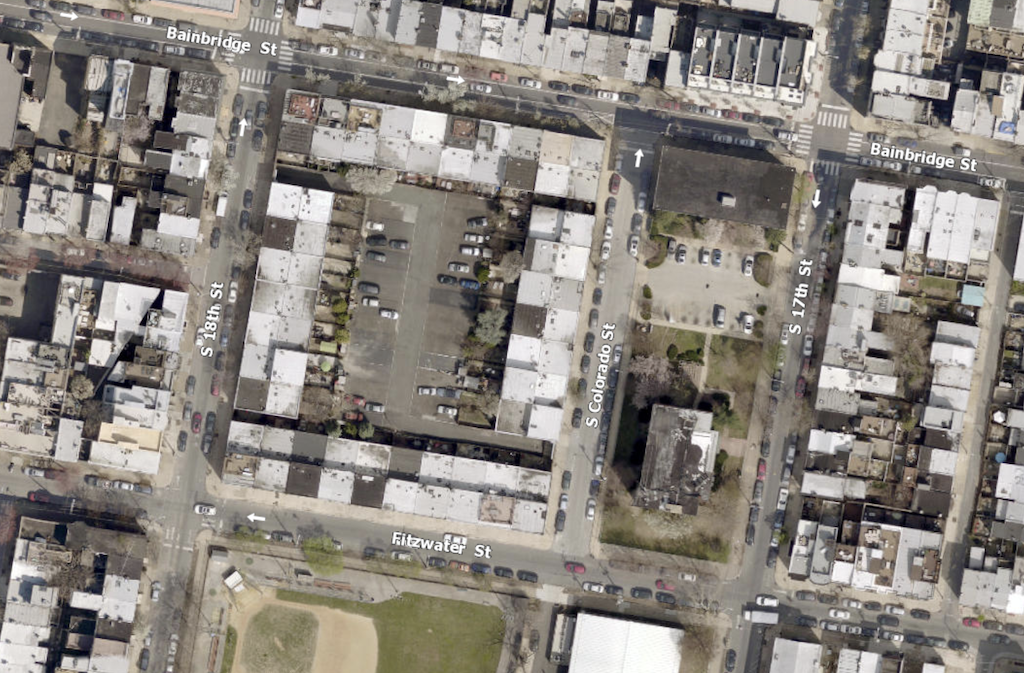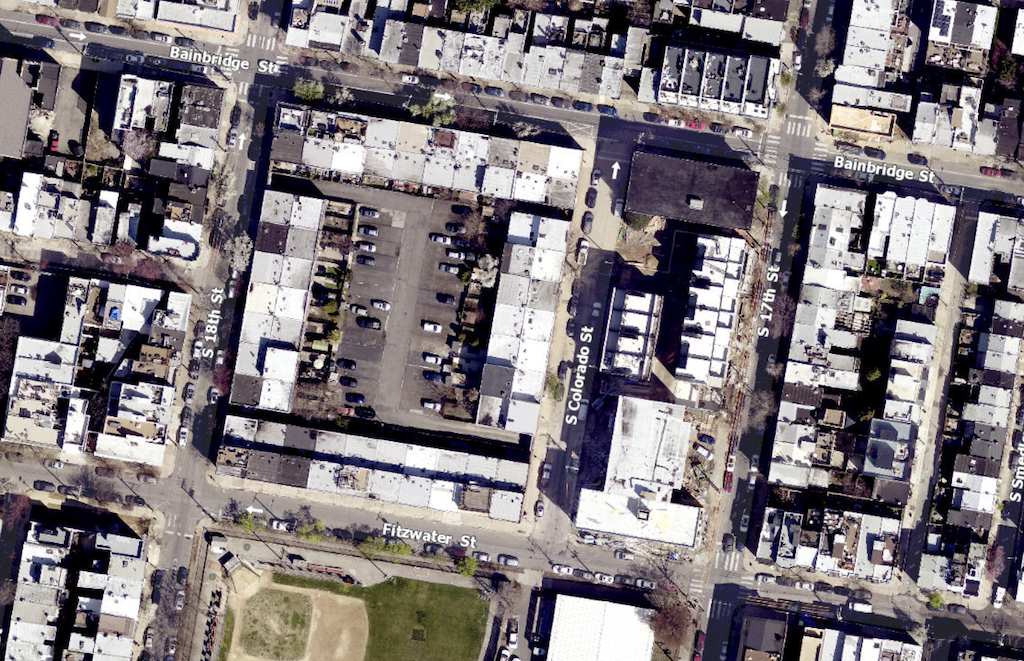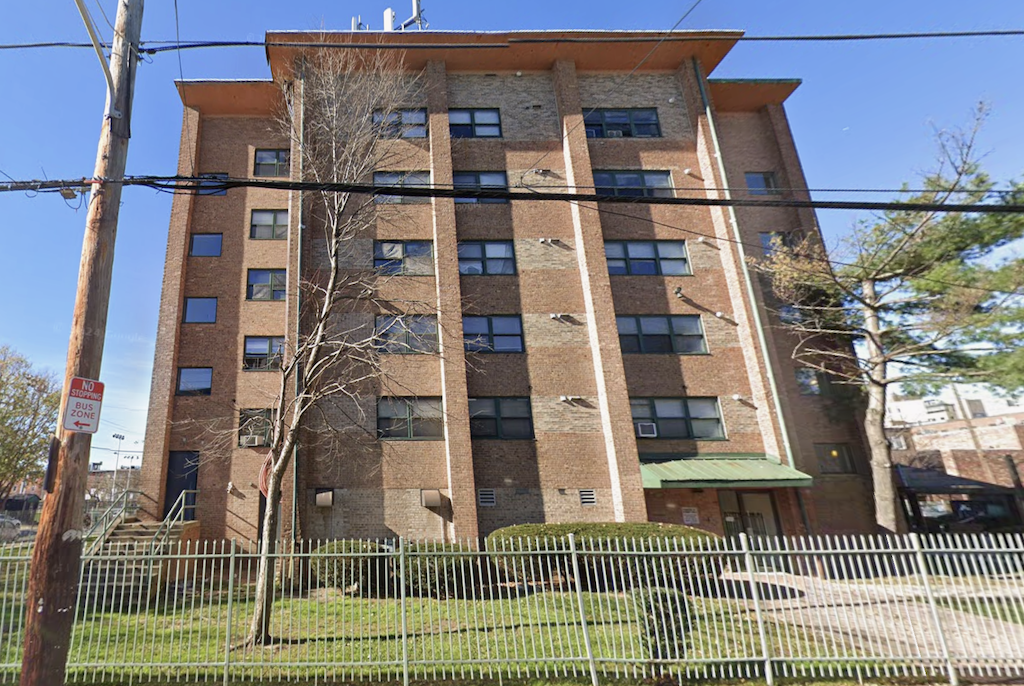We’ve told you in the past, but we’ll remind you anyway: CHOP wasn’t always located in West Philadelphia. The move to its current location happened only fifty years ago; and for an organization that dates back to 1866, that’s only about 30% of its history spent on the other side of the Schuylkill. CHOP spent the 58 years before 1974 on the 1700 block of Bainbridge, with their former location taking a residential turn since the children’s hospital’s departure. The western section was turned into a residential compound, with a huge parking area in the middle. The eastern section, which housed two research buildings, became Artist Village, an affordable housing complex that was developed in the mid-1990s.

In 2021, the Regis Group pulled permits to add units to the Artist Village site, as we shared at the time. We cheered the plans, as this 30K sqft lot is located in a highly desirable part of town and 36 units for such a large parcel has always felt to us like an underuse. The plans called for the construction of 5 luxury homes on Colorado Street, 7 luxury homes on 17th Street, and a 20-unit addition to the southern apartment building, with frontage on Fitzwater Street. Back when we last covered this site, the developers had merely pulled their zoning permits. Today, it’s a different story.

From what we can tell, the homes are materially complete. Several of the homes have sold, with prices ranging from just under $1.4M on Colorado Street to just over $1.8M on 17th Street. At least one home in the development is still available at a $1.8M price point, if you’re looking for a high end home with two-car parking in Graduate Hospital. There’s something poetic about buying a home in a neighborhood named after a hospital that no longer exists, on the site of a still existing hospital that moved to another part of town, right?
Meanwhile, the 20-unit addition on Fitzwater Street also looks finished, at least from the outside. Speaking of exteriors, the southern apartment building on the site has experienced a significant facelift as well, swapping a 1960s-era facade for a very 2020s-era paneled look. A sign out front indicating that units are available for rent would seem to suggest that any interior renovations are done.






On the one hand, we are jazzed about the additional density being added to this parcel and also appreciate the mix of homes for sale and rentals. On the other hand, it’s a shame, especially for the residents of the apartment buildings, that all of their open space has disappeared. Some of the space, like the southern section where the apartment building was constructed, was not widely used before and we were disappointed when plans to subdivide the property and build four high end homes fell through in 2013. But the middle section of the site between the two apartment buildings was used quite a bit, both for parking and casual enjoyment of outdoor space in the middle of the city. And indeed, the loss of those amenities does have a negative impact on the quality of life for Artist Village residents.
It’s also worth noting that, according to WHYY, the affordable housing covenants for the original units at Artist Village are set to expire in 2028. This will likely mean the transition of three dozen affordable units to market rate. While this is certainly an example of a developer playing the waiting game to perfection in order to unlock value in their real estate, it will also mean that a number of lower income folks will need to find a new place to live that will almost definitely be less proximate to Center City.
Given the challenges regarding affordability in Philadelphia and other cities these days, we wonder whether our local government can come up with a plan to financially incentivize affordable property owners to maintain their units as affordable beyond the original sunset time in their covenants. Building new affordable housing is incredibly expensive, so we would posit that maintaining existing housing would be far less expensive, in most cases. Perhaps Artist Village could present a test case for a yet to be developed program with these goals in mind. It’s just food for thought, with four years of runway to come up with a mutually beneficial plan.

Leave a Reply